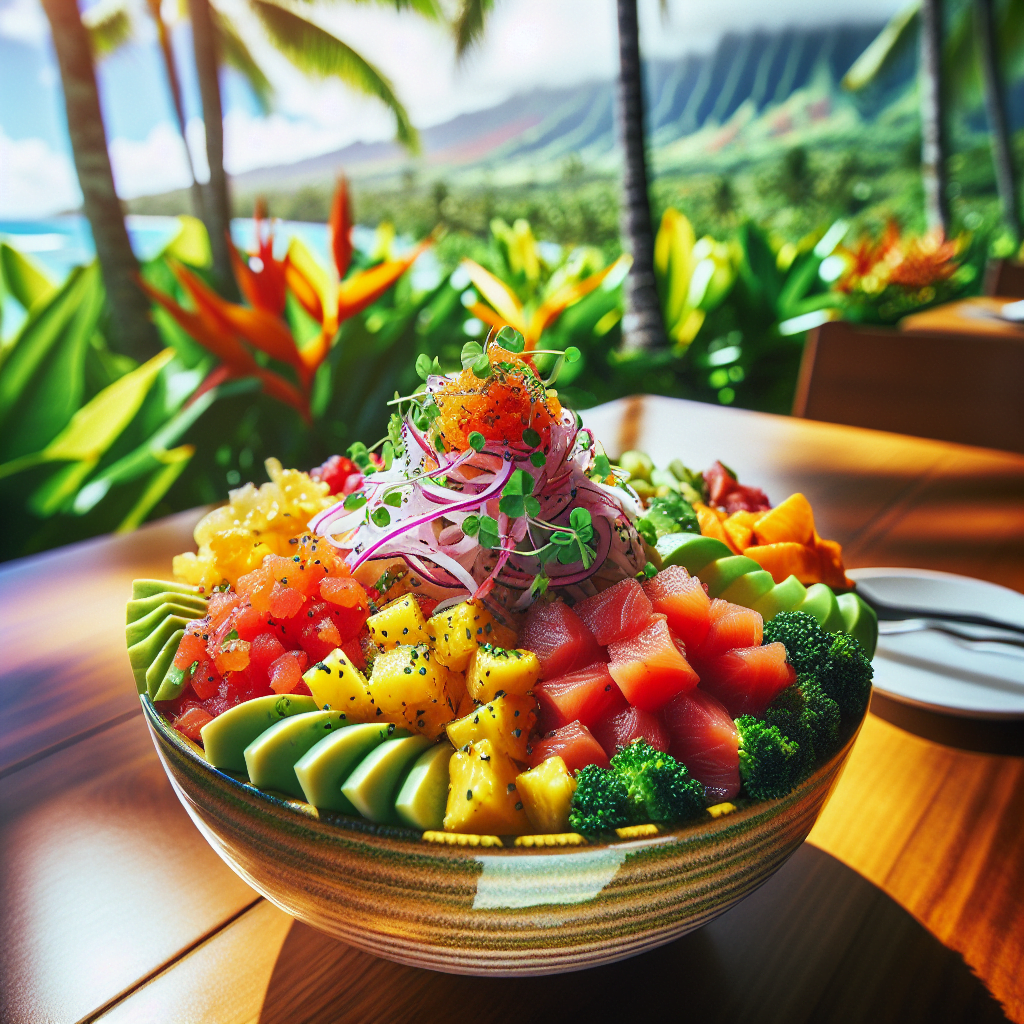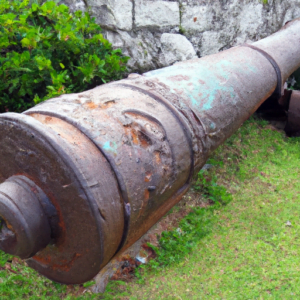Imagine yourself transported to the tropical paradise of Hawaii and Hawaiian food, surrounded by the soft rhythm of ukulele music and the tantalizing aroma of roasted pig. In this enchanting setting, you find yourself drawn to the vibrant and lively atmosphere of a traditional Hawaiian Luaus. But what exactly is a luau, and how did it become such a beloved and iconic celebration? In this guide, we will uncover the rich history behind this cultural feast, from its ancient roots to the modern-day festivities. Join us as we embark on a captivating journey through time, exploring the essence of the Hawaiian luau and discovering the best ones to experience for yourself. Aloha!
Table of Contents
ToggleHawaiian Food: The Origin of Luaus
Ancient Hawaiian Feasts
Luaus are deeply rooted in the ancient Hawaiian culture, dating back centuries. Known as a traditional Hawaiian feast, luau originally referred to the taro leaf, the main ingredient used to cook food for these gatherings. In ancient times, the preparation and sharing of a feast held significant cultural importance, symbolizing community, abundance, and celebration.
The Evolution of Luaus
Over time, luaus have evolved from simple gatherings to grand celebrations. Initially, luaus were intended for special occasions, such as religious ceremonies, victory celebrations, or important social events. However, as time went on, they became more commonplace, serving as a way for communities to come together, relax, and enjoy each other’s company. Today, luaus have become iconic cultural events, often featuring traditional music, dance, and of course, an array of delicious dishes.
The Meaning and Significance of Luaus
Symbolic Elements
Luaus are rich in symbolism, with various aspects carrying significant meaning. The abundance of food represents the spirit of sharing and hospitality, reflecting the Hawaiian value of aloha. The presence of ohana (family) and friends strengthens the sense of community and unity. Additionally, the use of traditional decor, such as floral arrangements and tiki torches, enhances the atmosphere, creating a festive and joyful ambiance.
Community Bonding
One of the key reasons luaus hold great significance is their ability to bring people together. These gatherings foster a sense of belonging and connection, allowing individuals from diverse backgrounds to forge strong bonds. Luaus provide a space where friendships are strengthened and new connections are formed. Whether it’s through engaging in lively conversations, participating in traditional activities, or simply sharing a meal, luaus promote a sense of community and inclusivity.
Traditional Foods at Luaus
Poi: The Staple Food
Poi, a traditional Hawaiian staple food, is a must-have at any authentic luau. Made from cooked and mashed taro root, it has a unique texture and taste. Poi can range from thick and sticky to thinner and smoother, depending on personal preference. Often served as a side dish or accompaniment, poi adds a distinct flavor to the overall dining experience, and its presence is a testament to the deep-rooted traditions of the Hawaiian cuisine.
Kalua Pig: A Slow-Roasted Delicacy
A luau is incomplete without the tantalizing aroma of Kalua pig wafting through the air. This centerpiece of the feast is prepared by slow-roasting a whole pig in an underground oven called an imu. The result is tender, flavorful meat that falls off the bone. Seasoned with salt and sometimes cooked with banana leaves for added moisture, Kalua pig is a mouthwatering delight that showcases the skill and artistry of traditional Hawaiian cooking techniques.
Lomi Lomi Salmon: A Refreshing Side Dish
Lomi Lomi salmon, a refreshing and savory dish, is a favorite at luaus. Made from salted and marinated salmon, diced tomatoes, onions, and sometimes chili peppers, this colorful side dish is traditionally mixed by hand, giving it a unique texture. The combination of flavors creates a satisfying contrast, making it a versatile accompaniment to other dishes. Lomi Lomi salmon is enjoyed for its refreshing taste and serves as a reminder of the abundant seafood found in the waters surrounding the Hawaiian islands.
Traditional Drinks at Luaus
Mai Tai: The Classic Hawaiian Cocktail
No description of a luau would be complete without mentioning the iconic Mai Tai. This classic Hawaiian cocktail, invented in the 1940s, blends rum, orange liqueur, lime juice, and a touch of almond syrup, creating a refreshing and tropical drink. Served over ice and garnished with a slice of pineapple and a maraschino cherry, the Mai Tai embodies the spirit of the islands and is often regarded as a symbol of paradise.
Hawaiian Fruit Punch: A Non-Alcoholic Treat
For those who prefer non-alcoholic beverages, Hawaiian fruit punch is a delightful choice. Bursting with the vibrant flavors of tropical fruits such as pineapple, guava, and passionfruit, this refreshing drink quenches the thirst on a warm Hawaiian day. Its bright colors and sweet taste add a festive touch to any luau, ensuring that everyone can enjoy a delicious beverage that captures the essence of Hawaii.
The Role of Music and Dance in Luaus
Hula: The Soul of Hawaiian Dance
At the heart of every luau is the mesmerizing art form of hula. Hula is a traditional Hawaiian dance characterized by graceful movements and storytelling through hand gestures. This ancient dance form preserves and perpetuates Hawaiian history and culture, often depicting legends, significant events, or the natural beauty of the islands. Accompanied by live music and chanting, hula mesmerizes spectators with its captivating rhythms and intricate choreography.
Mele: The Traditional Songs
Music plays a vital role in enhancing the atmosphere of a luau. Traditional Hawaiian songs, known as mele, are performed with various instruments, such as the ukulele, guitar, and sometimes the ipu (a gourd percussion instrument). Mele often tell stories of love, nature, or the deep connection between the Hawaiian people and their land. The enchanting melodies and harmonies of mele transport listeners to a place where the spirit of Hawaii comes alive.
Traditional Clothing at Luaus
The Aloha Shirt: An Iconic Symbol
The iconic aloha shirt is a staple at luaus and represents the casual and laid-back spirit of Hawaii. With vibrant and colorful patterns featuring floral motifs, palm trees, or Hawaiian landscapes, the aloha shirt captures the essence of the islands. Worn by both men and women, this comfortable and stylish piece of clothing embodies the relaxed and joyful atmosphere of a luau.
The Muumuu: Comfort and Elegance
For women, the muumuu is a popular choice of attire at luaus. This loose-fitting, long dress showcases the elegance and grace of traditional Hawaiian fashion. Often made from vibrant and flowy fabrics adorned with bold patterns, the muumuu allows for comfort and freedom of movement while adding a touch of sophistication. Many women choose to accessorize their muumuu with floral leis or hairpieces to enhance their natural beauty.
Popular Luaus in Hawaii
‘Aha ‘Aina: A Royal Celebration
One of Hawaii’s most renowned luaus is ‘Aha ‘Aina, a captivating and immersive experience held at the Royal Hawaiian Hotel in Waikiki. This luau takes guests on a journey back in time, retracing the history and traditions of the Hawaiian monarchy. From the moment you arrive, you are greeted with a warm aloha and transported to an era of grandeur, where you can savor a lavish feast, witness breathtaking performances, and embrace the rich heritage of Hawaii.
Paradise Cove Luau: A Spectacular Beachfront Experience
Located on the stunning Ko Olina coastline, Paradise Cove Luau offers a truly unforgettable beachfront experience. As the sun sets, guests are welcomed with a traditional Hawaiian greeting and are treated to a variety of cultural activities, including ancient Hawaiian games, lei making, and hula lessons. The luau showcases a sumptuous buffet featuring traditional Hawaiian cuisine, accompanied by enchanting performances and a thrilling fire knife dance finale that will leave you in awe.
Modern Adaptations of Luaus
Destination Luaus: Catering to Tourists
In response to the growing popularity of luaus among tourists, many destinations in Hawaii now offer specially curated luaus that cater to visitors. These modern adaptations often blend traditional elements with modern amenities to create an immersive experience for guests. From luxurious resorts hosting their own luaus to outdoor venues set against breathtaking landscapes, destination luaus allow visitors to embrace Hawaiian culture while enjoying the comforts of their chosen accommodations.
Private Luaus: Intimate Celebrities
For those seeking a more intimate and exclusive luau experience, private luaus are a popular choice. These high-end gatherings can be tailored to suit specific preferences and are often hosted by celebrities or local dignitaries. Private luaus offer a personalized touch, allowing guests to enjoy world-class entertainment, gourmet cuisine, and the undivided attention of the hosts. Whether celebrating a special occasion or simply indulging in luxury, private luaus guarantee an unforgettable experience.
Etiquette and Customs at Luaus
Removing Shoes and Leis: A Sign of Respect
When attending a luau, it is customary to remove your shoes before entering the venue or home. This practice stems from the belief that shoes carry dirt and negative energy, and removing them demonstrates respect for the space and the hosts. Similarly, accepting and wearing a lei, a garland of flowers or shells, is a gesture of welcome and hospitality. Wearing a lei symbolizes an openness to receiving the warmth and love of the host and the Hawaiian culture.
Accepting Food with Aloha
When partaking in the feast at a luau, it is essential to accept the food with aloha, both in demeanor and approach. Demonstrating gratitude and appreciation for the hard work and care that goes into the preparation of the dishes is a sign of respect. It is customary to take modest portions of each dish, allowing others to enjoy the meal, as well. Eating quietly and savoring the flavors is a way to appreciate the culinary artistry and cultural significance of the food.
Preserving and Honoring the Hawaiian Tradition
The Importance of Cultural Education
Preserving and honoring the Hawaiian tradition is crucial for ensuring its survival and passing it on to future generations. Educating both locals and visitors about the history, customs, and values of the Hawaiian people helps foster a deep appreciation and understanding of the culture. By participating in luaus and supporting cultural education initiatives, individuals contribute to the preservation of the unique heritage and create a sustainable future for Hawaiian traditions.
Supporting Local Artists and Businesses
An integral part of preserving the Hawaiian tradition is supporting local artists, artisans, and businesses. Many luaus feature live performances by talented musicians, dancers, and craftsmen who have dedicated their lives to preserving Hawaiian art forms. By purchasing their handmade crafts, artwork, or attending their performances, individuals contribute to the livelihoods of these artists and help ensure that these valuable skills and traditions continue to thrive.
As you dive into the history, meaning, and significance of Hawaiian luaus, it becomes evident that these traditional feasts are far more than just a celebration. They embody the spirit of aloha, bringing people together, fostering community bonding, and preserving the rich cultural heritage of the Hawaiian Islands. Whether indulging in traditional foods, sipping on tropical drinks, witnessing mesmerizing music and dance performances, or immersing yourself in the vibrant attire, every aspect of a luau offers a glimpse into the heart and soul of Hawaii. By participating in and supporting luaus, you contribute to the preservation and perpetuation of these cherished traditions, ensuring that Hawaiian culture remains vibrant for generations to come.





